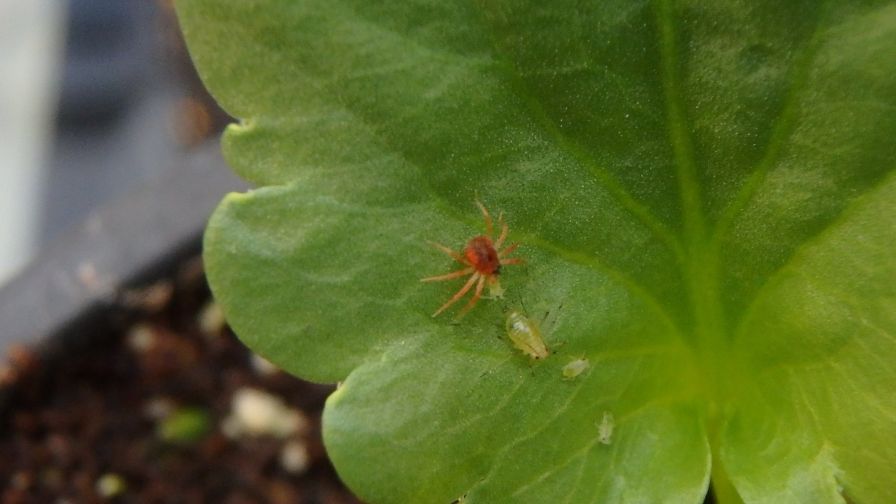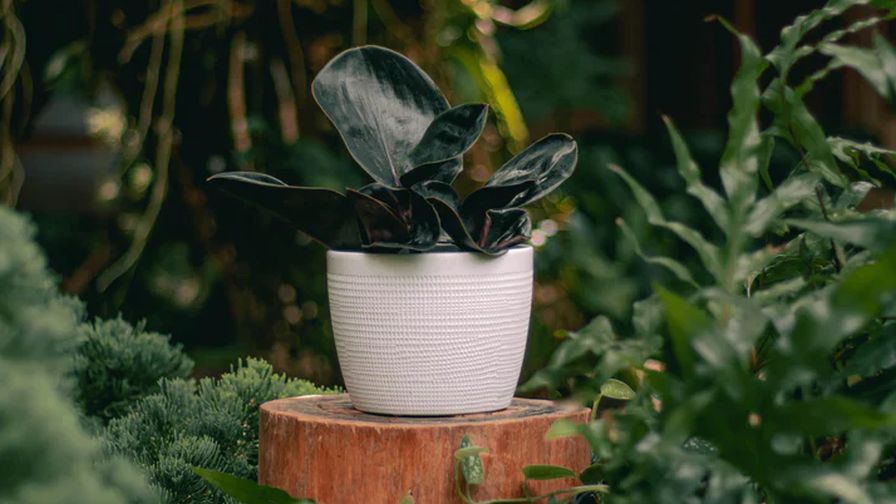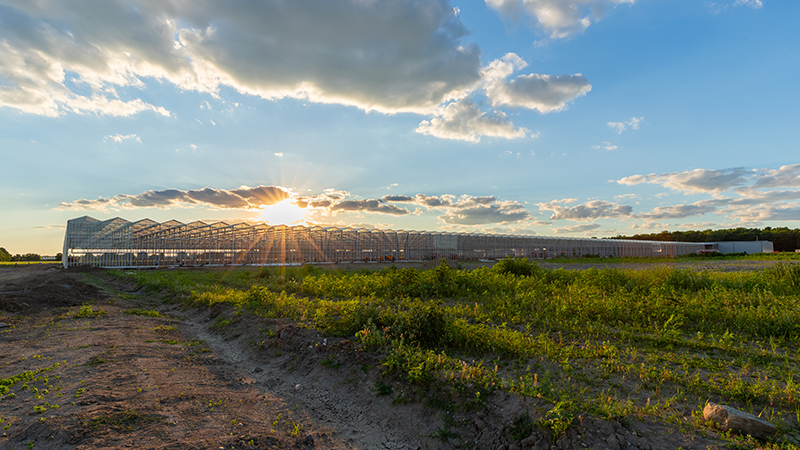The Latest Insights on Biological Product Use in the Greenhouse

Photo Tara Saito
The 2022 Biocontrols USA Conference and Expo, which took place in early March, featured breakout tracks devoted to specific specialty crops, including those grown in a controlled environment. Here are just a few highlights from the greenhouse-specific educational presentations.
A New Predatory Mite for Greenhouse Vegetable, Ornamental Growers
Brian Spencer, President of Applied Bio-Nomics, offered a closer look at the Vineland Research and Innovation Centre’s development of a new predatory mite, Anystis baccarum, and its path to broad release (read more about this in a story by Vineland’s Dr. Rose Buitenhuis).
“People have tried to rear Anystis in the past, but gave up because it can be very hard to control,” Spencer said. “We set up a model with Vineland on a way to develop it and learn more about how it feeds.”
Here’s what else the collaboration between Vineland and Applied Bio-Nomics has learned:
- Dubbed a “crazy mite” by Spencer, Anystis is pernacious and moves very quickly when hunting for pests (Spencer showed a video of aphids actually fleeing from it on a leaf)
- It is a predator at each stage of its life cycle, which is why Spencer recommends growers cycle applications among life stages
- It will target any instar larvae, including large ones
- During trials at Applied Bio-nomics, Anystis did not attack the company’s other predator products. “In fact, it often stepped right over them.” Spencer says.
- While some Vineland trials showed that Anystis might interfere with Orius, another predator, Spencer said his team has not seen this
- The first signs of success when using Anystis were in cut gerbera, where it targeted thrips, aphids, and even spider mites. “We were able to figure out an order of preference,” said Spencer, who cautioned that this was specific to gerberas. “Sometimes biocontrol rules are based on the plant, not the pests targeted.”
- Anystis is comfortable at a broad range of temperatures, meaning it can target pests that remain active even in cool weather.
So what’s next? Spencer said Anystis is available now in Canada, and Applied-Bionomics is currently working on a petition with USDA that will hopefully lead to eventually access for U.S. growers.
“While I don’t see it as being a silver bullet for insect control, it should be a helpful tool,” Spencer said.
Managing Greenhouse Vegetable Diseases with Microbials
Zamir Punja, a Professor of Plant Pathology at Simon Fraser University, provided a closer look at managing disease in greenhouse vegetables, with a particular focus on cucumbers.
“Fusarium root and stem rot has been an issue in cucumbers for a long time,” Punja said. “It works its way through root into the stem, and because it first affects root tips, this is where biocontrol applications should be targeted,” Punja said.
Management is based on preventing root infection, as once an infection takes place, there’s no real control option. Punja’s research focused on three products registered in Canada: Mycostop, Rootshield, and Prestop.
“Our first focus was on putting them on early, setting up the biocontrol agent first, then introducing the pathogen,” Punja said. “We needed to determine how long the biocontrol agent would survive and how far it would spread.”
The good news, Punja said, is that Prestop seemed to survive for at least two months, although he said monitoring the survival of biocontrol agents will continue to be important.
Getting the Best Results from Biostimulants in the Greenhouse
Michelle Jones, Professor and DC Kiplinger Floriculture Chair at The Ohio State University, is a national authority figure on biostimulants. After offering a basic overview of the different types of biostimulants, she addressed some of the challenges that come with using biostimulants.
“Like any other crop input, biostimulants cost money, so you want to make sure you get the right return on investment, which can come from improving crop quality, reducing your reliance on other inputs, or simply insurance from unexpected plant stresses,” Jones said.
Some of the factors growers need to consider include:
- Fertilizer use. With fertilizer prices going up and availability limited, biostimulants can help you reduce fertilizer inputs. The key is figuring out the right balance, as fertilizers can influence the efficacy of biostimulants if application rates are too high.
- Growing media: In general, biostimulants have a more positive plant response with plants grown in soil than in soilless media. Peat moss can sometimes have a negative effect, but it depends on plant species and kind of peat, Jones says. She also cautions that if you have a good biostimulant program but then change your media, you may see different results. “When buying a biostimulant product, ask if it’s been tested in soilless media or whatever medium you’re using in,” Jones said.
- Environmental conditions: Many beneficial fungi can protect plants from extreme conditions, and while you may not see an effect during greenhouse production, you might notice a positive difference further down the retail chain.
- Host specificity: Some mycorrhizae will have different effects on different plants. “As you’re your growing media, when buying biostimulants, be sure to ask if the product has been trialed on the greenhouse crops you’re growing,” Jones says.
Learn more about this year’s Biocontrols Conference here.









